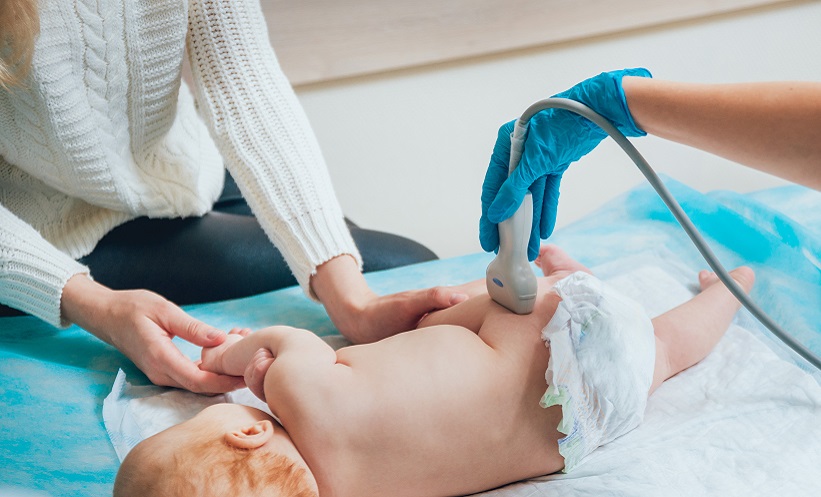A RECENT multicentre prospective study has evaluated the diagnostic accuracy of point-of-care ultrasound (POCUS) when performed by paediatric emergency physicians to detect hip effusion in children. Hip effusion is a common cause of atraumatic limp in paediatric patients and often necessitates imaging to guide management. As ultrasound is the standard modality, assessing whether POCUS can serve as an accurate, timely alternative to radiology-performed ultrasound (RADUS) is of significant clinical interest. The key finding of this study is that POCUS, when performed by highly trained emergency physicians, demonstrated sensitivity as high as 98.1%.
The study was conducted between October 2019 and October 2023 across five paediatric emergency departments in the USA and Australia. Children up to 18 years of age presenting with clinical indications for RADUS were eligible. Each participant underwent both POCUS and RADUS. Credentialed paediatric emergency physicians categorised their POCUS findings simply as positive or negative for hip effusion. The diagnostic accuracy of POCUS was then measured against the results of RADUS, which served as the reference standard.
A total of 161 children were included, with 322 hips scanned. The average age was approximately 62 months. Eighteen credentialed emergency physicians performed POCUS, although three high-volume physicians accounted for 61.5% of the cases. Among these three, POCUS demonstrated a sensitivity of 98.1% (95% CI: 88.8%–99.9%) and a specificity of 97.8% (95% CI: 86.8%–99.9%). In contrast, the remaining 15 physicians had a sensitivity of 83.3% (95% CI: 61.8%–94.5%) and specificity of 97.4% (95% CI: 84.6%–99.9%). Overall, per-hip analysis yielded a sensitivity of 89.3% (95% CI: 80.6%–95.0%) and specificity of 99.2% (95% CI: 97.0%–99.9%).
This study supports the diagnostic value of POCUS in identifying hip effusion when performed by experienced paediatric emergency physicians. However, the variation in accuracy between high- and lower-volume clinicians underscores the importance of focused training and consistent practice. As such, while POCUS offers a promising bedside diagnostic tool, its integration into routine clinical workflows should be accompanied by rigorous credentialing and training programmes. Limitations include potential selection bias and variability in operator experience across sites.
Reference
Jones RM et al. Diagnostic Accuracy of Point-of-Care Ultrasound for Hip Effusion: A Multicenter Diagnostic Study. Ann Emerg Med. 2025;DOI: 10.1016/j.annemergmed.2025.04.033.








